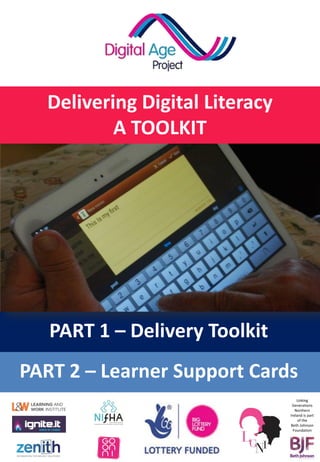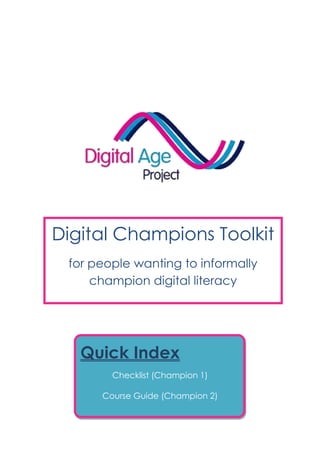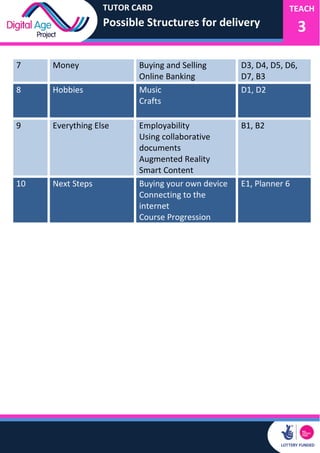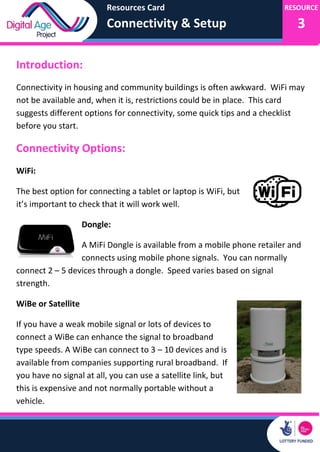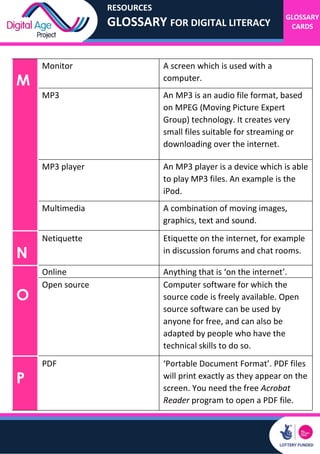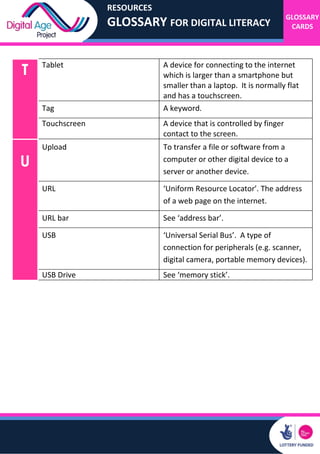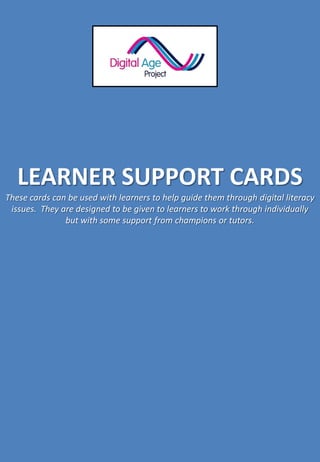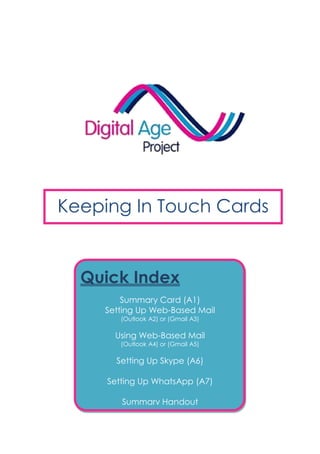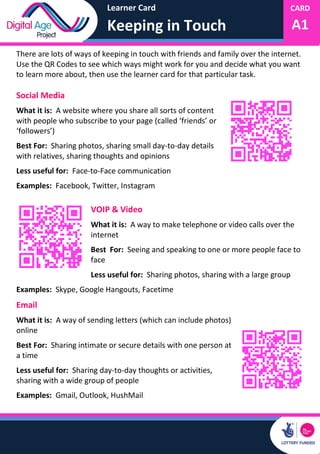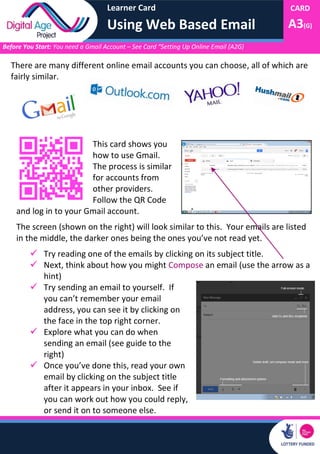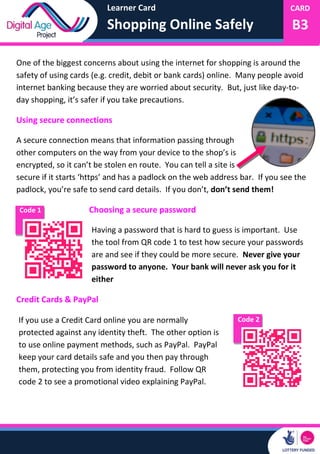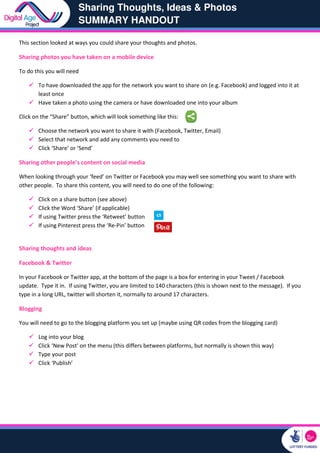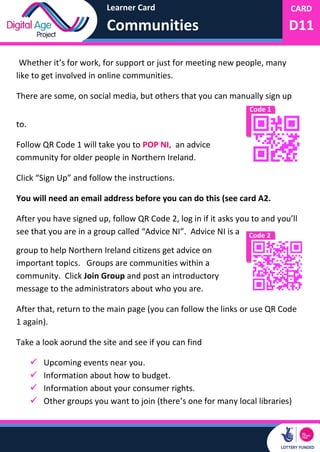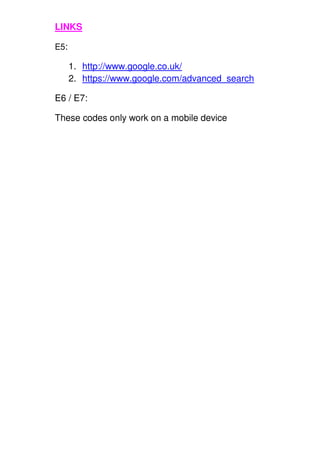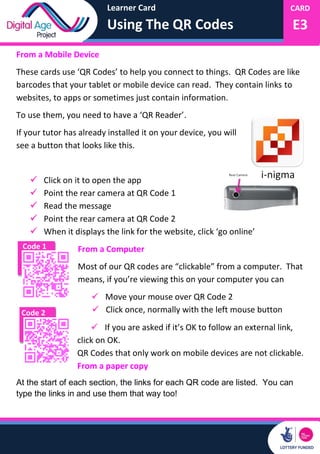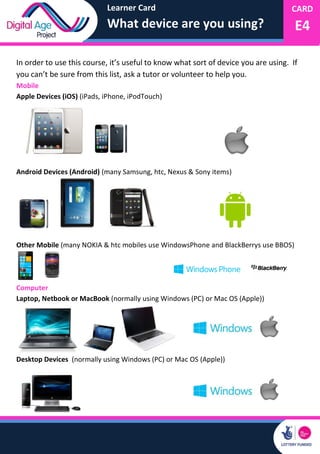This document provides a toolkit for delivering digital literacy training in various community settings. It includes delivery toolkits for planners, digital champions, and teachers.
The planner's toolkit helps those setting up a digital literacy program plan key aspects like location, resources, and learner needs. The digital champion's toolkit guides non-instructor volunteers and staff on informal support. And the teacher's toolkit aids formal digital skills instructors.
Accompanying these toolkits are learner support cards covering topics such as using technology, online safety, communication, and civic participation. The cards can be used flexibly in various training contexts.
